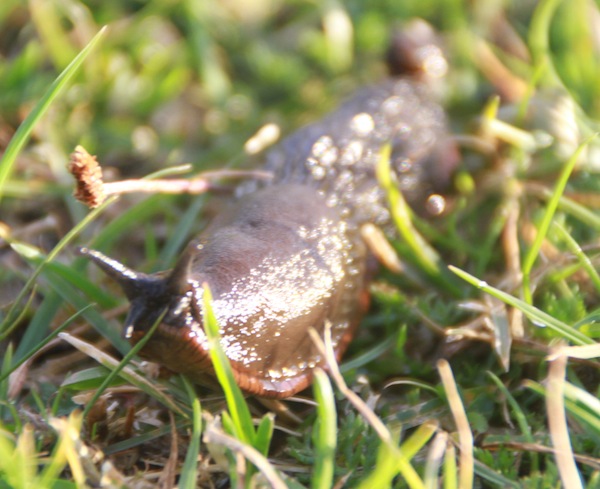Basically, this amounts to genocide, or the attempted removal of a whole species from an area, but it's an odd sort of genocide. Slugs being omnivores join in and eat other slugs, or the dead ones anyway.
At 6 a.m. every day, on my way to the swimming pool, I do a slug run of the garden, picking up great handfuls and squashing them on the path.
A friend, also a gardener, tells me he kills the slugs but has a soft spot for the snails. I saw what the snails did to my strawberries, so they get no quarter from me.
Yet no matter how many slugs and snails I remove, there always seem to be more of them, a tireless army munching it's way silently through my vegetables like a malevolent tidal wave of jelly.
Posted by Jonathan Brind.

The type photographed is the Large Black Slug (Arion ater) and this can be 20cm in length when fully extended. It has a surprisingly vibrant orange edge to what slug experts call the sole, that is the bottom it slides along on. It is an ominvore eating dung along with any carcass it can find. It will also eat plants but prefers them when they are rotten. All in all it's a thoroughly desirable creature (a genuine recycler) and far from deserving the nasty image slugs have of being the enemy of the gardener. According to the text books it's supposed to be mostly nocturnal but it is very commonly observed during the day, especially on paths after rain. Unfortunately this type do not live in my garden. The photograph was taken on lea marshes.